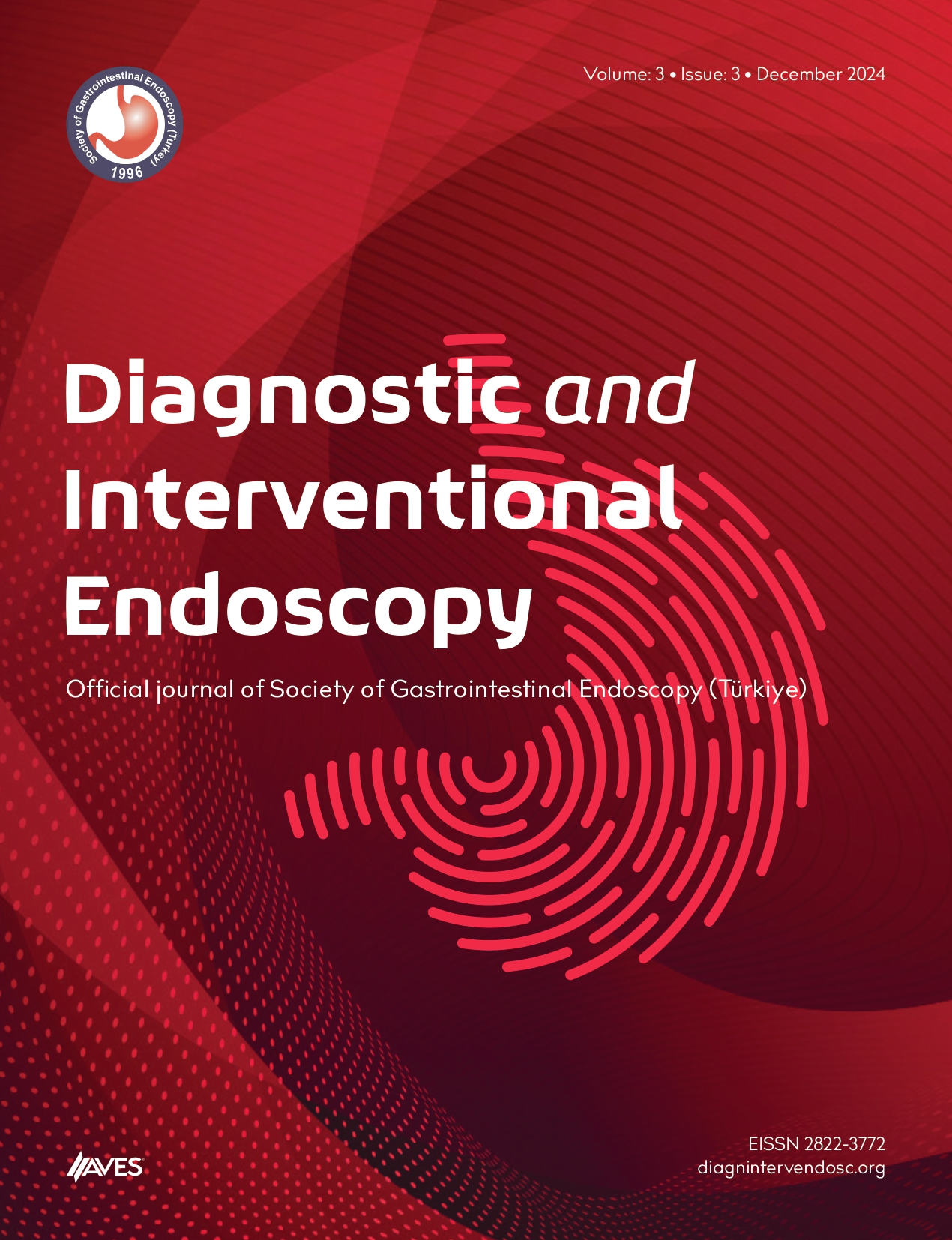Objective: The removal of colorectal neoplastic lesions by endoscopic resection methods is recommended. These lesions could also be removed by endoscopic mucosal resection method. However, endoscopic mucosal resection is not ideal since it might leave residual neoplastic tissue and could not allow for a detailed histopathological evaluation. Most lesions could be removed by the endoscopic submucosal dissection method en bloc and it allows for adequate histological evaluation. In this study, we aimed to demonstrate whether endoscopic submucosal dissection is an ideal and safe method for the removal of colorectal neoplastic lesions.
Methods: The consecutive endoscopic submucosal dissection series of 70 patients who underwent colorectal endoscopic submucosal dissection between January 2018 and March 2022 at Inonu University, Faculty of Medicine Gastroenterology Clinic were reviewed. Non-invasive early cancers larger than 10 mm with low lymph node metastasis risk and premalignant lesions larger than 15 mm were included in the study. Adenocarcinoma inclusion criteria were good histological differentiation, no ulceration at the lesion base, no submucosal invasion (assessed by endoscopic ultrasound), and no lymph node involvement identified in computed tomography or endoscopic ultrasound. Age, gender, endoscopic submucosal dissection indications, procedure duration, instruments used, complications, hospitalization duration, follow-up after discharge, pathological findings, and post-endoscopic submucosal dissection endoscopic findings were collected retrospectively.
Results: All 70 cases who underwent endoscopic submucosal dissection were followed up by a single gastroenterologist for 36 months. Among the patients, 45 (64.2%) were female and 25 (35.8%) were male. Endoscopic submucosal dissection indications included intraepithelial lesions, high-grade dysplasia (n = 30), low-grade dysplasia (n = 16), neuroendocrine tumor (n = 6), early-stage colorectal cancer (n = 11), inflammatory polyp (n = 2), and submucosal lesions [lipoma (n = 2) and leiomyoma (n = 3)]. The different types of lesions based on Paris classification are presented in Table 1. En bloc and piecemeal removal rates of the lesions with endoscopic submucosal dissection were 81.4% (57/70) and 18.6% (13/70), while pathologically complete and incomplete resection rates were 84.2% (59/70) and 15.8% (11/70), respectively. Perforation developed in 6 (8.5%) patients during the endoscopic submucosal dissection procedure. Three perforations developed in the rectum (2 Lateral Spreading Tumor [LST] and 1 early colonic cancer), 2 in the sigmoid colon (1 LST and 1 early colonic cancer), and 1 in the transverse colon (1 high-grade dysplasia). None of the colonic perforations required surgical intervention. All were closed with hemo-clips. Major bleeding was observed in 2 patients (2.8%). About 2 units of blood were transfused. Patients who developed major bleeding had early colon cancer and pseudodepressed LST. Minor bleeding (1 cecum, 2 transverse colons, 2 sigmoid colons, and 12 rectums) developed in 17 (24.3%) patients.
Conclusion: In conclusion, as a center that just started to conduct advanced endoscopic procedures, our endoscopic submucosal dissection results were consistent with the literature. The analysis of the treatment, complications, and local recurrence pursuant to endoscopic submucosal dissection revealed satisfactory results when the endoscopic submucosal dissection was conducted with proper analysis of the lesions. All studies done on this topic, including this one, have shown good outcomes for the use of endoscopic submucosal dissection in suitable colorectal lesions, but there is a need to invest in more expertise and infrastructure to maximize the good outcomes of advanced endoscopic procedures.
Cite this article as: Bilgiç Y, Orman İ, Ataman E, Sağlam O, Uzanulu F, Çağın YF. Three-year follow-up findings of colorectal neoplastic patients who underwent endoscopic submucosal dissection: A single-center experience. Diagn Interv Endosc. 2022;1(3):58-61.

.png)


.png)